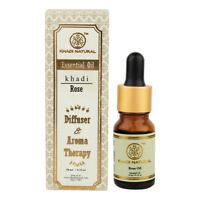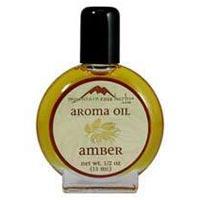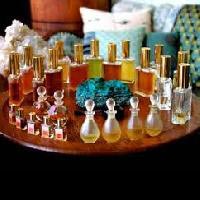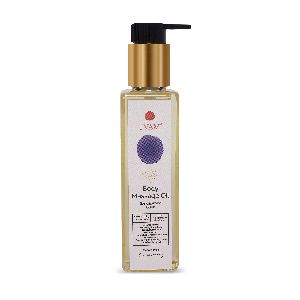






Sandalwood Oudh Body Massage Oil
690 Per Piece
500 Piece(s) (MOQ)
Sandalwood Body Massage Oil reduces stress, prevents dryness of skin, improves blood circulation and tones the body. Regular use of this oil leads to a beautiful and glowing skin. It is specially formulated with sesame oil and other essential oils for a relaxing and sensual experience and is light and non-greasy oil. How to use? Warm the oil and use fingertips to massage the oil in a circular motion, starting from a small circle to a large one, letting the nourishment from the oil penetrate the skin. Move to the next area of skin. Keep the Oil for 30-45 minutes on the body before a shower. It can be used as a massage or bath oil or as an after-bath/after-shave moisturizer that softens and relaxes the skin. Description Translated as the practice of going with the flow, Abhyangam is a therapeutic massage meant to move along the path of your body’s natural blood stream. All the way to the tips of your toes, and right back to your heart. Benefits For a relaxing massage, choose this aromatherapy oil that’s infused with the earthy sandalwood and woody oudh! Usage Use the massage oil as a moisturizer after your shower on towel-dried skin, or as a stand-alone massage experience. Take a small amount and massage till fully absorbed. Ingredients Oudh oil [Agar agar],Vetiver oil [Andropogon zizanioides]0.2%, Sandalwood oil [Santalum album]0.5%, Licorice extract [Glycyrrhiza glabra]0.7%, Cedar wood oil [Juniperus communis]1%, Cotton seed oil [Gossypium herbaceum]1%, Grape seed oil [Vitis vinifera]1%, Ashwagandha extract [Withania somnifera]1.5%, Juniper berry oil [Juniperus communis]1.5%, Wheatgerm oil 2%, Apricot oil [Prunus armeniaca]2%, Almond oil [Prunus amygdalus]5%, Olive oil [Olea europaea]65%, PCA Glyceryl Oleate 3%, Caprylic Capric Triglycerides 5%, Isopropyl myristate 10%.

Oud Oil, French perfumes
9,500 Per ml
250 ml (MOQ)
Scents from heaven!
Best Deals from Oud Oil

Oudh Perfume Oil
Get Price Quote

pure Oudh Oil
Get Price Quote
Oud oil is distilled from the Agarwood tree. Agarwood is reputedly the most expensive in the world. Oud oil is specifically from the resinous, fragrant heartwood produced primarily by trees in the genus Aquilaria. There are approximately 15 species of the genus Aquilaria. The resin has many names including agarwood, aloeswood, eaglewood, gaharu, agalocha or Oud (In Arabic).Aquilaria species that produce agarwood are found throughout Asia, while occur naturally in South and Southeast Asia. The Indian sub-continent was the main source of agarwood for many centuries but as trees became scarce in the middle of the twentieth century, extraction intensified in Indochina. Later on, it was extended to Indonesia and Malaysia. Today Agarwood plantations exist in a number of countries, including Bangladesh, Bhutan, India, Laos, Myanmar, Papua New Guinea, Thailand and Vietnam. Agarwood has been used to make high quality incense for centuries. The Chinese have described its smell as “a sweet, deep but balanced fragrance” and use it in religious and festive celebrations,as do the Arabs, Indians and Japanese. Agarwood is also part of many traditional pharmacopoeias, dating back to medieval times and Chinese doctors still prescribe it for colds and disgestion problem. Oil extracted from agarwood is used in Arabian countries as a perfume. Agarwood or Oud forms as a reaction to fungal or bacterial attack. Trees, ocassionally become infected with a parasite mould and they secrete a fragrant, protective oil into wounded areas (roots, branches or sections of the trunk), which gradually become harder and dark brown to black.The importance of this tree and its produce cannot be understated. It has been mentioned as a tree in Paradise in a hadith of the prophet Muhammad: Abu Hurayrah, may Allah be pleased with him, also reported that the Messenger of Allah, may Allah’s peace and blessing be upon him, said, “The first group (of people) to enter Jannah… their sweat will smell like musk; in their censers the aloes-wood will be used.” (Muslim, Bukhari) Why is Oud perfume oil (Agarwood oil) expensive? Low yield from plant material, typical and labour intensive process of extraction. These are all very few reasons of high costing of Oud perfume oil. For example, even when using a low grade of resinous wood for oil production, it normally requires a minimum of 20kg of agarwood to produce 12ml of oil. Another reason of agarwood being expensive is a threat to becoming endangered. The most important resin-producing species of Aquilaria are A. agollocha, A. malaccensis and A. crassna. A. malaccensis is protected worldwide under the CITES (The Convention on International Trade in Endangered Species of Wild Fauna and Flora) convention as well as by the World Conservation Union, IUCN. A. crassna was listed as an endangered species few years back by the Vietnamese Government but is now listed as a protected species in Vietnam. There are three methods through which agarwood oil is distilled namely, hydro-distillation, steam distillation and super critical CO2 extraction. However, the most common methods of distillation are hydro-distillation and steam distillation. Another thing that has its mark on the distillation of the oil is the age of the tree. Older trees have a higher resin content and just like a wine, old resin gets better with age. As with most things, the price you pay reflects the grade of Oud. Synthetic Oud Perfume Oil Since, Agarwood cannot be synthesized, chemical substitutes are already available for perfume these are cheap and constitute the least profitable end of the market. In addition, these products do not come even close in mimicking the natural product. The major chemical components responsible for the characteristic scent of Agarwood products, sesquiterpenes, can in principle be synthesised. However, these are very complicated structures that will be extremely expensive to synthesise, which makes it commercially completely unattractive. So the major difference in fragrances of Oud oil and synthetic Oud can be distinguished easily. Oud smells heavenly, woody and balsamic and surrounds a warm aura of bitter sweet and woody nuance. Whereas, synthetic Oud can smell plain woody, leathery and lacks that warm balsamic aura. Uses of Agarwood An important use of agarwood is the production of incense. Agarwood is an aphrodisiac, both in oil form, and as incense. These are generally topical uses but the oil is also sold in Vietnamese pharmacies for internal use with the same goal. Chinese medicine uses powdered Aquilaria as a treatment for cirrhosis of the liver and for other medicines. It has also been used as a treatment for lung and stomach tumors. Benefits of Oud Oil Oud oil has many benefits and has been used in various ways over the centuries. Some of the well known benefits include: – Oud has the ability to calm the body, remove destructive and negative energies, provide enhanced awareness, reduce fear, invoke a feeling of vigour and harmony, and enhance mental functionality; – Oud eases neurotic and obsessive behaviour as it is highly psychoactive; – Oud is highly effective for meditation, enlightenment, bringing deep tranquility and relaxation; – Oud can help to improve mental clarity; – Medically, agarwood is a tonic, aphrodisiac, diuretic, relieves epilepsy, antimicrobial, carminative, anti-asthmatic. – Oud is used in nervous disorders, digestive, bronchial complaints, smallpox, rheumatism, illness during and after childbirth, spasms in the digestive and respiratory systems, fevers, abdominal pain, asthma, cancer, colic, diarrhoea, nausea, regurgitation, weakness in the elderly, shortness of breath, chills, general pains and cirrhosis of the liver. It also acts as a director or focuser for other medicines.Fit for a King or Queen Oud oils have been the favoured scent of Sultans and royalty for centuries, and is considered rare and precious to this day. Stories tells us of the extreme habits of luxury of King Louis XIV of France, who had the practice of washing his clothes in Oud oil. Oud still remains a luxury item desired by royalty across the world, including but not limited to the orient, Arabia and indeed western royal society. Oud oil is gaining in popularity and western perfume houses are also getting in on the Oud act, recreating some of their famous fragrances with a more luxurious Oud version. There are also a range of unique fragrances from these designers, available in luxurious Oud. Fashion design houses such as Tom Ford, Versace, Gucci, Chanel, to name but a few, all have Oud oil on the market. Buy your Oud body Oil here. Agarwood Oil / Dihn al Oudh: Based on interviews with traders and vendors in Dubai, the following information summarises the indicators of agarwood oil (dihn al oudh) quality: • Country-of-Origin: Similar to the preference for raw agarwood, India is considered to be the best ‘source’ of agarwood oil (dihn al oudh), followed by Cambodia. As noted previously, there were also reports by traders and vendors interviewed that lesser quality oils are likely to contain mixed ‘countries-of-origin’, as well as different ages or vintages of oil. • Aroma: The more distinctive and spicier the aroma, the better the oil is considered to be. • Duration of fragrance: Good quality dihn al oudh can be identified based on the duration the fragrance lasts on the skin or clothes, with good quality ones lasting for up to three days. • Colour / Thickness / Density: The colour was reported to be connected with the age of the tree from which the chips (and then the oil) was extracted, while the thickness (viscosity) of the oil depends on the years that the oil was stored. This is connected with the years the distilled oil has been stored and thus matured: a process analogous to that of the different ‘vintages’ associated with wine. As a general point, from nearly all interviews conducted, there was very little awareness of individual genus or species names, nor of the